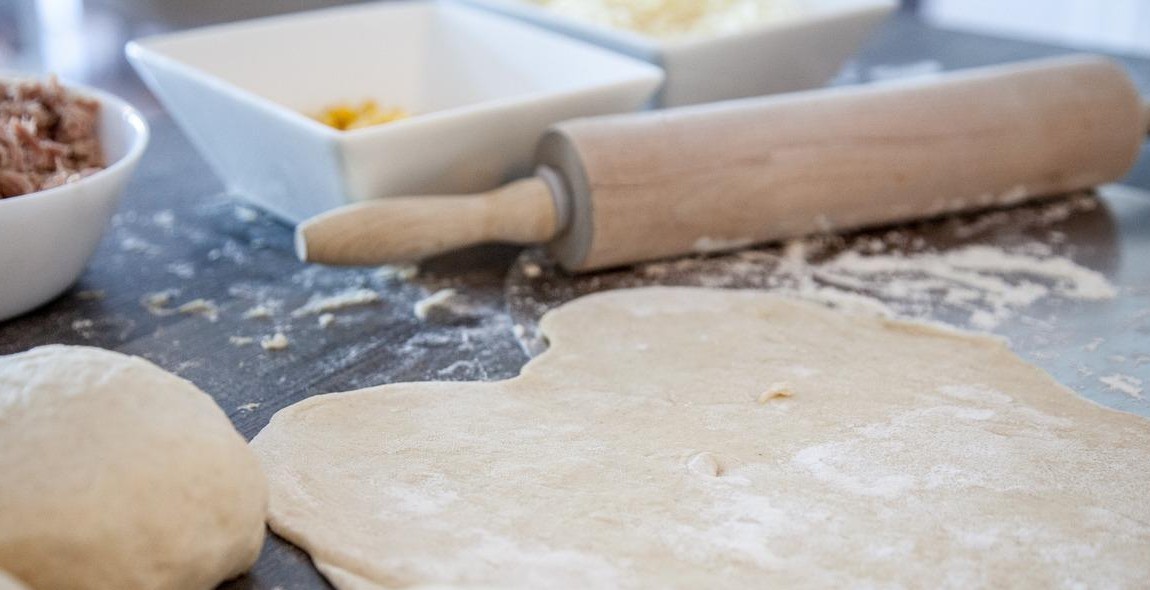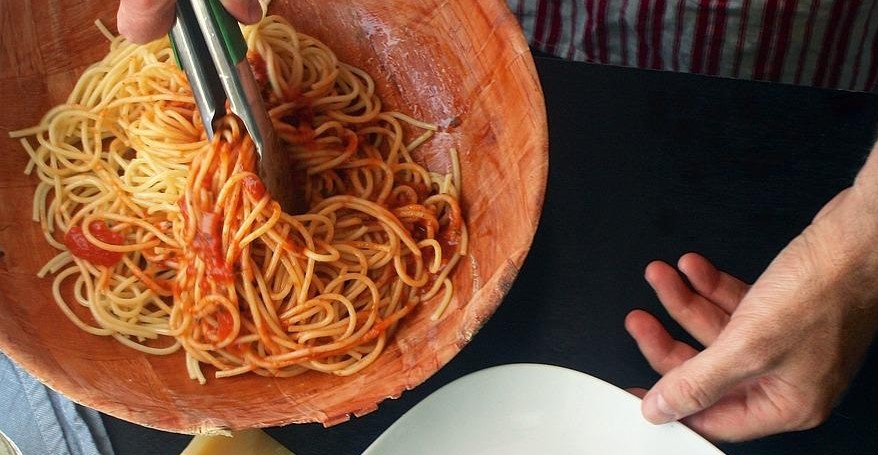How to Make Homemade Pasta: Recipes and Techniques for Fresh Pasta at Home
There is something truly special about homemade pasta. The texture, flavor, and overall experience of making it from scratch is unparalleled. While it may seem daunting to make your own pasta, it’s actually quite simple with the right tools and techniques.
Why Make Homemade Pasta?
For starters, homemade pasta tastes incredibly fresh and flavorful. Store-bought pasta simply can’t compare. Additionally, making your own pasta allows you to control the ingredients and tailor the recipe to your personal preferences. Whether you want to add herbs, cheese, or other flavors to your dough, the possibilities are endless.
Another benefit of making homemade pasta is that it’s a fun and rewarding activity. There’s something therapeutic about kneading the dough and shaping it into beautiful noodles. Plus, it’s a great way to impress your dinner guests or show off your culinary skills.
What You’ll Need
- Flour
- Eggs
- A rolling pin or pasta machine
- A large pot for boiling the pasta
With just a few simple ingredients and tools, you can create delicious homemade pasta in no time. In this article, we’ll cover everything you need to know to make your own fresh pasta at home.

Tools Needed for Homemade Pasta
Homemade pasta is a delicious and rewarding experience, but it does require some specialized tools to make it properly. Here are the essential tools you’ll need to make homemade pasta:
| Pasta Maker | A pasta maker is an essential tool for making homemade pasta. It allows you to roll out the dough evenly and cut it into the desired shape. You can choose between a manual or electric pasta maker, depending on your preference and budget. |
| Bench Scraper | A bench scraper is a handy tool for cutting and portioning the pasta dough. It’s also useful for cleaning up any stray bits of dough. |
| Rolling Pin | If you don’t have a pasta maker, you can use a rolling pin to roll out the dough. However, it’s more difficult to get the dough thin and even without a pasta maker. |
| Pasta Drying Rack | A pasta drying rack is useful for drying the pasta before cooking. It allows air to circulate around the pasta, which helps prevent it from sticking together. |
Ingredients for Homemade Pasta
The ingredients for homemade pasta are simple and few, but it’s important to use high-quality ingredients to ensure the best flavor and texture. Here are the ingredients you’ll need:
- All-Purpose Flour – You’ll need all-purpose flour to make the pasta dough. You can also use semolina flour or a combination of the two for a heartier texture.
- Eggs – Eggs are the key ingredient that binds the flour together to form the dough. Use fresh, room temperature eggs for the best results.
- Water – You may need a small amount of water to help bring the dough together, depending on the recipe.
- Salt – Salt is an important ingredient for flavoring the pasta dough. Use a good quality salt, such as sea salt or kosher salt.
With these tools and ingredients, you’ll be well on your way to making delicious homemade pasta in no time!
Basic Pasta Dough Recipe
Homemade pasta is easier to make than you might think, and it tastes so much better than the store-bought stuff. Here’s a basic pasta dough recipe that you can use as a starting point for all of your pasta-making adventures.
Ingredients
| 2 cups | All-purpose flour |
| 3 | Eggs |
| 1/2 tsp | Salt |
Instructions
- On a clean work surface, pile the flour into a mound and make a well in the center.
- Crack the eggs into the well and add the salt.
- Using a fork, beat the eggs and salt together, then gradually start incorporating the flour into the eggs.
- Knead the dough for about 10 minutes until it becomes smooth and elastic. If the dough is too dry, add a little water. If it’s too wet, add a little more flour.
- Wrap the dough in plastic wrap and let it rest for 30 minutes to an hour.
- After the dough has rested, cut it into four pieces.
- Flatten each piece with a rolling pin or a pasta machine, then roll it out to the desired thickness.
- Cut the pasta into the desired shape, then let it dry for a few minutes before cooking.
That’s it! With this basic pasta dough recipe, you can make all kinds of pasta, from fettuccine to ravioli. Experiment with different shapes and flavors, and have fun in the kitchen.

Rolling and Cutting Pasta Dough
Rolling and cutting pasta dough is a crucial step in making homemade pasta. Here are some techniques to make the process easier:
Rolling Out the Dough
First, divide the dough into small portions and flatten each one with a rolling pin or pasta machine. Begin with the widest setting on the pasta machine and gradually decrease the thickness until you reach the desired thickness. If you don’t have a pasta machine, you can use a rolling pin to roll out the dough on a floured surface. Be sure to flip the dough over and rotate it frequently to ensure even thickness.
Tips:
- Dust the dough with flour to prevent it from sticking to the pasta machine or rolling pin.
- Use a bench scraper to keep the edges straight and even.
- Don’t roll the dough too thin, or it may tear when cooking.
Cutting the Dough
Once you have rolled out the dough, you can cut it into various shapes depending on your recipe. You can use a knife or a pasta cutter to cut the dough into strips for spaghetti or fettuccine, or use a cookie cutter to make shapes like ravioli or tortellini. Be sure to dust the cut pasta with flour to prevent it from sticking together.
Tips:
- If using a pasta cutter, be sure to follow the manufacturer’s instructions for use.
- If making stuffed pasta, be sure to leave enough space around the filling to seal the edges properly.
- Don’t let the cut pasta sit for too long before cooking, or it may dry out and become brittle.
| Shape | Cooking Time |
|---|---|
| Spaghetti | 2-3 minutes |
| Fettuccine | 3-4 minutes |
| Ravioli | 3-4 minutes |
| Tortellini | 2-3 minutes |
Variations on Basic Pasta Dough
Once you have mastered the basic pasta dough recipe, you can experiment with different variations to create unique and delicious pasta dishes. Here are three variations to get you started:
Egg Yolk Pasta Dough
Egg yolk pasta dough is a rich and flavorful variation that is perfect for making filled pastas like ravioli and tortellini. To make egg yolk pasta dough, simply replace some of the whole eggs in the basic recipe with egg yolks. Use 2 egg yolks for every 3 whole eggs. This will give the pasta a deeper color and a richer flavor.
Spinach Pasta Dough
Spinach pasta dough is a great way to incorporate some extra nutrients into your pasta. To make spinach pasta dough, blanch a bunch of spinach, squeeze out the excess water, and puree it in a food processor. Add the pureed spinach to the basic pasta dough recipe, reducing the amount of liquid accordingly. This will give the pasta a vibrant green color and a slightly earthy flavor.
Tomato Pasta Dough
Tomato pasta dough is a flavorful variation that is perfect for pairing with tomato-based sauces. To make tomato pasta dough, puree a can of tomatoes in a food processor and add it to the basic pasta dough recipe, reducing the amount of liquid accordingly. This will give the pasta a beautiful red color and a slightly sweet and tangy flavor.
Experimenting with different variations on basic pasta dough is a fun and creative way to elevate your homemade pasta dishes. Try these variations or come up with your own to discover your new favorite pasta recipe!

Using Your Fresh Pasta
Cooking Fresh Pasta
Fresh pasta cooks faster than dried pasta, so be sure to keep an eye on it as it boils. It’s best to cook fresh pasta in a large pot of salted boiling water. You’ll only need to cook it for 1-3 minutes, depending on the thickness of the pasta. Once the pasta is cooked, drain it well and serve immediately.
Serving Suggestions
There are endless ways to enjoy fresh pasta! Here are a few ideas to get you started:
- Toss freshly cooked pasta with a simple sauce of olive oil, garlic, and Parmesan cheese.
- Top fresh pasta with a hearty meat sauce or a creamy Alfredo sauce.
- Make a classic Italian dish like spaghetti carbonara or fettuccine Alfredo.
- Toss fresh pasta with roasted vegetables and a light sauce for a healthy and flavorful meal.
Don’t be afraid to get creative with your fresh pasta dishes! Use your favorite ingredients and experiment with different sauces and toppings to find your perfect combination.
| You can store fresh pasta in the refrigerator for up to 2 days or freeze it for later use. |
Troubleshooting Homemade Pasta
Making homemade pasta is a fun and rewarding experience, but it can also be frustrating if something goes wrong. Here are some common issues that can arise when making pasta dough and how to troubleshoot them.
Pasta Dough is Too Dry
If your pasta dough is too dry, it will be difficult to roll out and may crack or tear. To fix this, add a small amount of water to the dough. Start with a tablespoon at a time and knead the dough until it reaches the desired consistency. Be careful not to add too much water, as this can make the dough too sticky.
Pasta Dough is Too Sticky
If your pasta dough is too sticky, it will be difficult to handle and may stick to the pasta machine or rolling pin. To fix this, add a small amount of flour to the dough. Start with a tablespoon at a time and knead the dough until it reaches the desired consistency. Be careful not to add too much flour, as this can make the dough too dry.
Pasta is Tough or Chewy
If your pasta is tough or chewy, it may be overcooked or under-kneaded. To fix this, try cooking the pasta for a shorter amount of time or kneading the dough for longer. You can also try adding a small amount of olive oil to the dough to make it more tender.
| Issue | Troubleshooting Tips |
|---|---|
| Pasta Dough is Too Dry | Add small amounts of water to the dough until it reaches the desired consistency |
| Pasta Dough is Too Sticky | Add small amounts of flour to the dough until it reaches the desired consistency |
| Pasta is Tough or Chewy | Cook the pasta for a shorter amount of time, knead the dough for longer, or add a small amount of olive oil to the dough |
